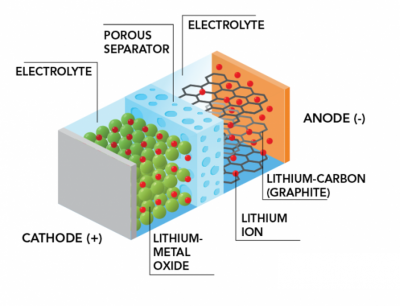
Lithium ion batteries, just like all other battery types, require materials known as electrodes to function. These electrodes are porous materials, and their microstructure is linked to performance of the battery (i.e. charging behavior and durability of the battery); however, this link/relationship remains poorly understood.
The Electrochemical Innovation Laboratory at UCL are currently exploring this battery electrode microstructure versus performance relationship, with the help of a really cool experimental technique called X-ray Tomography. This involves passing an X-ray beam through battery electrodes in such a way as to obtain a nice 3-dimensional (3D) picture of what their microstructure looks like. We also intend to obtain these pretty 3D images of the battery electrodes at different stages in a battery’s lifetime i.e. from fresh state up until end-of-life. Such 3D maps will help to strengthen the battery microstructure vs. performance relationship, and hopefully aid in improvement of lithium ion battery technology. The image bellow shows the 3D tomography of a battery electrode.
 Close
Close

